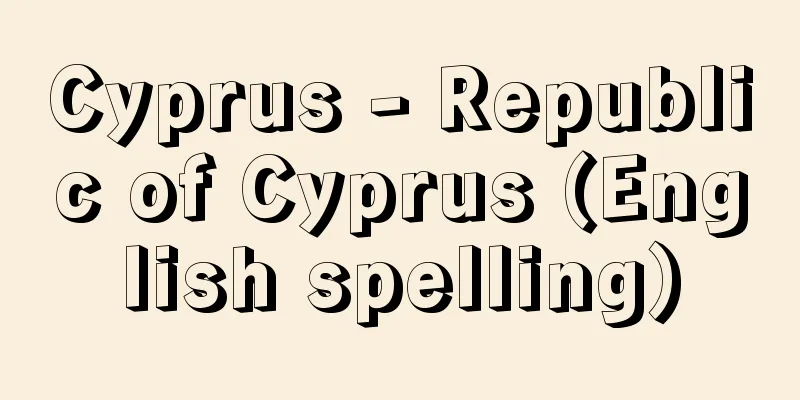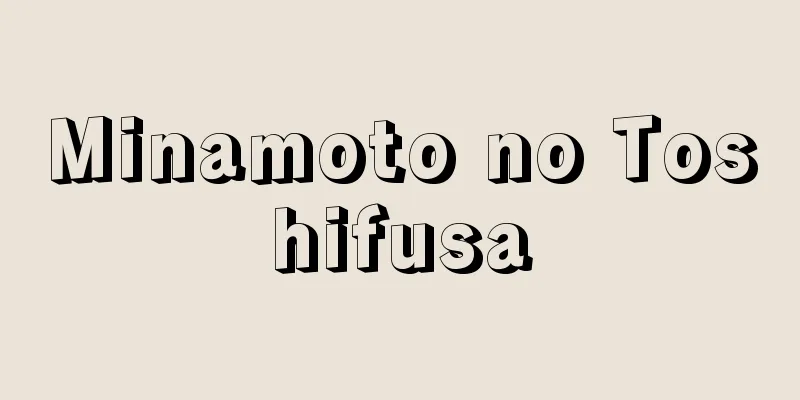Cyprus - Republic of Cyprus (English spelling)

|
Cyprus is an island republic in the eastern Mediterranean Sea. Its area is 9,251 km2. Its capital is Nicosia. The name Cyprus comes from the Hebrew word kopher, which is derived from the henna plant Lawsonia alba , which grows wild on the island. The population is mainly Greek (about 78%), Turkish (about 11%), Armenian, and others. The Greek name Kypros means Cyprus, but the Turkish word Kbrs means Kubrs. In English, it is pronounced Cyprus. Since independence in 1960, there have been constant conflicts between the Greek and Turkish residents, who have different languages, cultures, and religions. In 1975, the Turkish residents established the "Federated Turkish Republic of Cyprus" in the north, and in 1983, they abandoned the idea of a federation with the Greek-resident state and unilaterally declared independence as the "Turkish Republic of Northern Cyprus". As of 2009, the total population of Cyprus is estimated at 871,000, and the population excluding the "Turkish Republic of Northern Cyprus" is 771,000 (2006 estimate). In 2004, Cyprus joined the European Union (EU). [End line] NatureCyprus is located 100 km from the Syrian coast in the east and 70 km from the Turkish coast in the north, and is in a position that controls traffic in the eastern Mediterranean. It is the third largest island in the Mediterranean after Sicily and Sardinia. Tectonically, it belongs to the Alpine-Himalayan orogenic belt, and the Troodos Mountains and Kyrenia Mountains, both of which are about 1000 meters above sea level, run east to west from the north to the south of the island. The highest point is Mount Olympus (1951 meters) in the Troodos Mountains. The Kyrenia Mountains are mainly composed of limestone, but volcanic rocks can also be seen in the Troodos Mountains. Between the two mountain ranges lies the Mesaoria Plain, which is the grain-producing region of Cyprus and is 20 to 30 kilometers wide, and the capital Nicosia is located here. The climate is typical of the Mediterranean climate, with an average annual temperature of about 20°C, and annual precipitation of 300 to 400 mm on the plains and 1200 mm in the mountains, but precipitation is limited to October to March of the following year. Nearly 20% of the country is covered with forests of pine, cedar, cypress, and plane trees, mainly in mountainous areas, and is said to be the most beautiful forest in the eastern Mediterranean region. The forests of Paphos in the west are home to the Cyprus sheep, a wild animal that is a protected species. [End line] historyAlthough there are remains from the Neolithic period, Greeks settled there from ancient times, and it was also influenced by the Mycenaean civilization, and flourished as an exchange point with Egypt. It was later ruled by the Phoenicians, Assyrians, Persians, and the Ptolemaic dynasty, and became part of the Roman Empire in 57 BC. It continued to be part of the Byzantine Empire, but was invaded by Arabs from the 7th to the 10th centuries, and was conquered in 1191 by King Richard I (the Lionheart), who participated in the Crusades. It then came into the hands of the Knights Templar, and from 1192 to the 3rd century, it was ruled by the French House of Lusignan, who was entrusted with it by Richard I, and during this period it experienced medieval prosperity. However, in 1489 it became part of Venice, and in 1571 it was ruled by the Ottoman Empire, after which Turkish people began to immigrate there. However, 300 years later, in 1878, Britain, which was trying to respond to Russia's southward policy after the Russo-Turkish War, gained sovereignty over the area with the approval of the Ottoman Empire. With the outbreak of World War I, it was annexed by Britain and became a direct colony in 1925. From the 1930s, the Enosis movement, which sought to unite Cyprus with Greece, grew among the majority Greek population with the support of the Greek government, and conflict between the minority Turkish population and the Turkish government, who opposed this, began to intensify. When Britain moved its Middle East Command Headquarters to Cyprus in 1954, the Enosis movement intensified into anti-British riots and terrorist activities, and in 1958 the Turkish population began to demand partition, making the conflict more serious. Britain finally gave up its claim to the island, and as a result of a tripartite conference between Britain, Greece, and Turkey in 1959, Cyprus achieved independence as a single republic on August 16, 1960, under the guarantee of these countries. However, even after independence, the hostility between the Greek and Turkish residents continued, and in 1963 a civil war broke out, leading to the deployment of the United Nations Peacekeeping Force in Cyprus (UNFICYP) (until 1964). In 1974, a coup d'état was carried out by radical Greek soldiers supported by the Greek government, leading to the temporary exile of moderate President Makarios. This led to the Turkish military invading the north of the island under the pretext of protecting the Turkish residents, and the conflict became international. With the north (39% of the country's territory) still occupied by the Turkish military, the establishment of the "Federated Turkish Republic of Cyprus" in the north was announced in 1975. The adoption of such a federal system was agreed upon by both sides in 1977, but with no progress being made, the Turkish Assembly declared independence as the "Turkish Republic of Northern Cyprus" in November 1983, and since then, the island of Cyprus has effectively become a state in which two countries exist, a north and a south. [End line] PoliticsIn the Republic of Cyprus, a multi-ethnic state established in 1960, the president (five-year term) was fixed to be of Greek descent, the vice-president to be of Turkish descent, and the cabinet and parliament (unicameral) were allocated to seven Greeks and three Turkish members, based on the agreement reached at the Tripartite Conference in 1959. However, as early as 1963, irregularities arose, such as the parliament being run by only 35 Greeks without the 15 Turkish members being elected, and this has never been changed since (as of 2009, out of 80 seats, only 56 are Greeks, with a five-year term). Furthermore, after the creation of the Federated Turkish Republic of Cyprus in 1975, the division became definitive, and this Turkish Republic established its own constitution and parliament, changed its currency from the Cypriot pound to the Turkish lira, and unified its standard time with mainland Turkey. This division triggered the exodus of approximately 180,000 Greek residents from the north to the south, and the migration of approximately 45,000 Turkish residents from the south to the north. The declaration of independence of the "Turkish Republic of Northern Cyprus" in 1983 has made the political situation in Cyprus even more complicated and chaotic. Turkey recognized the "Turkish Republic of Northern Cyprus" immediately after its independence, but this declaration of independence has been condemned by most countries at the United Nations. In 1991, the United Nations proposed a federal system with two states, North and South, but in the 1993 presidential election of the Republic of Cyprus, Clerides, who opposed the UN proposal, was elected, and in the 1996 general election, the Democratic Movement Party (DISY), led by Clerides, won a majority. Clerides was re-elected in the 1998 presidential election. Since 1993, there have been frequent talks between North and South in response to the UN proposal, but in 1997, the negotiations ended in failure as the Northern Cyprus side, together with its backer Turkey, opposed the issue of the Southern Cyprus joining the EU alone. In 2001, direct negotiations between the two presidents were held again under the mediation of the United Nations, and have continued periodically since then. In the presidential election held in February 2003, Papadopoulos, who was critical of Clerides' policy toward Northern Cyprus, was elected. In April 2004, a national referendum was held on the possibility of unifying North and South Cyprus under a UN peace proposal based on a federal state system, but the negotiations were suspended due to divided opinions between the North and South. In May 2004, Cyprus joined the EU (European Union) on its own. In the February 2008 presidential election, Christofias, who has a flexible stance on resolving the Cyprus issue, was elected, and negotiations for unification with Northern Cyprus have begun again. The Republic of Cyprus has a military strength of 10,000 troops in the ground, as well as some equipment in the army, navy and air force, while the Turkish Republic of Northern Cyprus has a national army of 5,000, with a further 36,000 Turkish troops stationed there to support it. Meanwhile, the United Nations Peacekeeping Forces in Cyprus (approximately 850 personnel) are stationed there as a neutral force. The UK also has military bases in the three districts of Akrotiri, Episkopi and Dhekelia, where it has established the Middle East Joint Command and has approximately 3,000 troops stationed there. The Greek army also has approximately 1,100 troops stationed there. [End line] Economy and IndustryAgriculture has long been the most important industry in Cyprus. 7.2% of the working population is engaged in agriculture (2004), and much of the country's land is used for agricultural production. However, most of the land is rain-fed, so much of it is left fallow, and farmland accounts for only 17.8% of the country's land area (2005). Farming is also small-scale and not very productive. Furthermore, the conflict that began in 1974 dealt a significant blow to agricultural production. The main crops have traditionally been wheat, barley, potatoes, grapes, and citrus fruits such as oranges, but the conflict forced Cyprus to import large quantities of these staple grains at one time. On the other hand, production of potatoes and fruit has increased, supported by demand from oil-producing Arab countries, and they have become important export items. Cyprus has been famous for its copper production since ancient times, and it is said that the word copper was derived from the Greek word for Cyprus. Even today, in addition to copper, the country also produces iron, chromium, asbestos, and gypsum, much of which is exported. However, in recent years, production has declined due to resource depletion. Industry is centered on small-scale food processing, textiles, and cement, and some products such as textiles and cement are exported. Due to the division of the country, the "Republic of Cyprus" lost 39% of its northern land area, but since this northern region accounted for 58% of Cyprus's gross national product (GNP), 75% of overnight tourist arrivals, 80% of citrus orchards, 56% of mining output, and 50% of industrial production facilities, the loss was significant. However, the economy subsequently recovered, and in the aftermath of the Lebanese civil war, the trading and tourism capital that had been in Beirut relocated there, so the economy regained its vitality and the number of foreign tourists increased. In 2007, exports amounted to $1.25 billion, while imports were $8.69 billion. The main export partners are the UK, Greece, Russia, the UAE and Lebanon, and the main export products are clothing, agricultural products such as potatoes, lemons, grapefruit, grapes, wine and tobacco, pharmaceuticals and cement. The main import partners are the UK, Italy, Greece, the USA and Germany, and the main import products are crude oil, petroleum products, machinery, chemical products and textile products. Meanwhile, the northern part of the country, the Turkish Republic of Northern Cyprus, is undergoing economic development with aid from Turkey, but due to Turkey's financial difficulties, the results have been inferior to those of the south. [End line] societyApproximately 78% of the population is Greek, 11% Turkish, with a small number of Armenians and Arabs. In the past, Greek and Turkish residents were distributed throughout the country, living in different residential areas and villages within the city. However, since 1974, as the division into north and south became fixed, Greek residents were forced to migrate as refugees to the south and Turkish residents to the north. Greek and Turkish are the official languages, and English is widely spoken as a vestige of the British colonial period. Most Greek residents are Greek Orthodox, while Turkish residents are Sunni Muslim, most Armenians are Christian Armenian Church followers, and most Arabs are Christian Maronites. Primary education is free and compulsory from age 6 to 15 (9 years). In addition to the comprehensive universities, University of Cyprus and University of Nicosia, there are also universities such as the Technical University. [End line] cultureCyprus is a scenic island in the Mediterranean Sea, rich in historical sites and legendary places, and has a lot to see in terms of tourism. Particularly famous sites include the prehistoric dwellings of Choirokoitia, the beach of Paphos, said to be the birthplace of Venus, the ruins of Salamis from the Greek and Roman eras, and the Venetian fortress in Kyrenia. Nicosia is home to the Cyprus Museum. There are beaches all over the island, and ski resorts can be found in the Troodos Mountains. [End line] "A Historical Walk through Cyprus" by Sachiko Shibusawa (2005, Shinchosha) [References] | | | | | | | [Supplementary material] |"> Cyprus flag ©Shogakukan Illustration/Shogakukan Creative "> Cyprus location map Source: Shogakukan Encyclopedia Nipponica About Encyclopedia Nipponica Information | Legend |
|
地中海東部に浮かぶ同名の島からなる共和国。面積9251平方キロメートル。首都はニコシア。キプロスの名は、この島に自生する植物ヘンナLawsonia albaのヘブライ語kopherに由来する。住民はおもにギリシア系(約78%)とトルコ系(約11%)のほかにアルメニア系などからなり、ギリシア語による名称キプロスKyprosに対してトルコ語ではクブルスKbrsとよぶ。なお英語ではサイプラスと読む。1960年の独立以来、言語、文化、宗教を異にするギリシア、トルコ両系住民の間で紛争が絶えず、1975年にはトルコ系住民が北部に「キプロス連邦トルコ系住民共和国」を樹立し、さらに1983年にはギリシア系住民国家との連邦構想を放棄して一方的に「北キプロス・トルコ共和国」としての独立を宣言している。2009年時点でキプロスの総人口は87万1000人と推計され、「北キプロス・トルコ共和国」を除いた人口は77万1000(2006推計)である。2004年、ヨーロッパ連合(EU)加盟。 [末尾至行] 自然東のシリア海岸から100キロメートル、北のトルコ海岸から70キロメートルにあって、地中海東部の交通を制する位置にあり、地中海の島としてはシチリア、サルデーニャに次いで大きい。地体構造上はアルプス‐ヒマラヤ造山帯に属し、島の南北に、ともに標高1000メートル級のトロードス山脈とキレニア山脈が東西に走る。最高点はトロードス山脈中にあるオリンポス山(1951メートル)である。キレニア山脈はおもに石灰岩からなるが、トロードス山脈には火山岩もみられる。なお、両山脈の中間にはキプロスの穀倉地帯である幅20~30キロメートルのメサオリア平野が横たわり、首都ニコシアもここに位置する。気候は典型的な地中海性気候を示し、年平均気温は約20℃、年降水量は平地で300~400ミリメートル、山地では1200ミリメートルに達するが、降水はほぼ10月から翌年3月までに限られる。山地を中心に、国土の20%近くがマツ、スギ、イトスギ、プラタナスなどの森林で覆われ、地中海東部地方で最高の美林といわれている。西部のパフォスの森には、野生の保護動物キプロスヒツジが生息する。 [末尾至行] 歴史新石器時代の遺跡もみられるが、古くからギリシア人が定着し、ミケーネ文明の影響も受け、エジプトとの交流地点として栄えた。その後フェニキア、アッシリア、ペルシア、プトレマイオス朝などによって支配され、紀元前57年にはローマ帝国領となった。引き続きビザンティン帝国領となったが、7世紀から10世紀にかけてアラブ人の侵入を受け、1191年には十字軍に参加したイングランド王リチャード1世(獅子(しし)心王)によって征圧された。ついでテンプル騎士団の手に渡ったのち、1192年から3世紀にわたっては、リチャード1世から託されたフランスのリュジニャン家によって統治され、この期には中世的繁栄をみた。しかし1489年にはベネチア領となり、さらに1571年にはオスマン帝国に支配され、以後トルコ人の移住が始まった。しかし300年後の1878年、ロシア・トルコ戦争後のロシアの南下政策に対応しようとするイギリスが、オスマン帝国の容認のもとでその統治権を得た。ついで第一次世界大戦の勃発(ぼっぱつ)とともにイギリスが併合し、1925年にはその直轄植民地となった。 1930年代から、キプロスをギリシアに合併させようとするエノシス運動が、ギリシア政府の支援のもとに、多数を占めるギリシア系住民の間で高まり、これに反対する少数派のトルコ系住民およびトルコ政府との間で対立が激化し始めた。1954年にイギリスが中東統合軍司令部をキプロスに移したことから、エノシス運動は反イギリス暴動とテロ活動へと先鋭化し、1958年にはトルコ系住民の分割要求も高まって抗争は深刻化した。ついにイギリスは領有を断念し、1959年のイギリス、ギリシア、トルコの三か国会議の結果、1960年8月16日、これらの国の保障のもとにキプロスは単一の共和国として独立を遂げた。 しかし独立後もギリシア系住民とトルコ系住民の反目はいっこうに後を絶たず、1963年には内戦が勃発して国連キプロス平和維持軍(UNFICYP)が出動した(~1964)。さらに1974年になって、ギリシア政府に支持された過激派ギリシア系軍人によるクーデターが発生し、穏健派のマカリオス大統領が一時追放される事態となった。これを機にトルコ軍がトルコ系住民の保護を理由に北部に侵入して紛争は国際化し、トルコ軍によって北部(国土の39%)が占領された状態が固定したまま、1975年には北部での「キプロス連邦トルコ系住民共和国」の発足が宣せられた。このような連邦制の採用は、その後1977年になって双方の合意を得たが、しかし事態の進展がないまま1983年11月、トルコ系住民議会は「北キプロス・トルコ共和国」としての独立を宣言、以後キプロス島は、事実上南北2か国が存在する状況となっている。 [末尾至行] 政治1960年発足の複合民族国家「キプロス共和国」では、1959年の三か国会議での取決めに基づき、大統領(任期5年)をギリシア系、副大統領をトルコ系にそれぞれ固定し、内閣と国会(一院制)構成員をギリシア系7、トルコ系3に割り振るなどの配慮がなされてきた。しかし早くも1963年には、トルコ系国会議員15名が選出されないまま、ギリシア系の35名だけで国会が運営されるなどの変則事態が生じ、以来改められることがなかった(2009年時点では80議席のうち、ギリシア系56議席のみで構成、任期5年)。さらに1975年に「キプロス連邦トルコ系住民共和国」が誕生してからは、分裂は決定的となり、この「トルコ系住民共和国」は独自の憲法と議会を確立し、通貨もキプロス・ポンドからトルコ・リラに切り換え、標準時間もトルコ本土と統一させるなどの措置を講じている。なおこの分裂を契機に、約18万のギリシア系住民の北部から南部への脱出と、約4万5000人のトルコ系住民の南部から北部への移住がみられた。1983年の「北キプロス・トルコ共和国」の独立宣言は、キプロスの政治情勢をますます複雑、混迷化させている。トルコは「北キプロス・トルコ共和国」をその独立直後に承認したが、国連の場ではこの独立宣言はほとんどの国から非難の対象となっている。 1991年国連は南北2国による連邦制を提案したが、「キプロス共和国」の1993年の大統領選挙では、国連提案に反対の立場のクレリデスが当選し、1996年の総選挙でもクレリデスの率いる民主運動党(DISY)が多数を得た。1998年の大統領選挙ではクレリデスが再選された。1993年以後、国連提案を受けてしばしば南北の会談が繰り返されているが、1997年の交渉では、北キプロス側が支援国トルコとともに、南単独のEU加盟問題に反発して交渉は物別れに終わった。2001年、国連仲介のもと、ふたたび両系大統領の直接交渉が行われ、以後、定期的な直接交渉が続けられた。2003年2月に行われた大統領選挙ではクレリデスの対北キプロス政策に批判的なパパドプロスが当選。2004年4月、連邦国家制を骨子とする国連和平提案による南北統合の是非を問う国民投票が行われたが、南北で賛否が分かれ、交渉は中断した。2004年5月、キプロスは単独でEU(ヨーロッパ連合)加盟を果たした。2008年2月の大統領選挙ではキプロス問題解決に柔軟な姿勢のフリストフィアスが選出され、ふたたび北キプロスとの統合に向けた交渉が始まっている。 陸軍の兵力1万のほか陸海空軍に若干の装備をもつ「キプロス共和国」の戦力に対して、「北キプロス・トルコ共和国」も5000の国民軍をもち、さらに3万6000のトルコ軍が駐留しこれを支援している。一方、中立的立場から国連キプロス平和維持軍(約850人)が駐留する。またアクロティリ、エピスコピ、デケリアの3地区にはイギリスが軍事基地をもち、中東統合軍司令部を置いて約3000の兵力が駐留。ギリシア軍も約1100の兵力が駐留している。 [末尾至行] 経済・産業農業は古くからキプロスでもっとも重要な産業である。就業人口の7.2%が農業に従事し(2004)、国土の多くが農業生産に利用されている。ただ、ほとんどが天水耕地であるため休閑地も多く、農地面積は国土の17.8%(2005)を占めるにすぎず、経営も零細で生産性はそれほど高くない。そのうえ1974年からの紛争によって農業生産が被った打撃には著しいものがあった。おもな作物は伝統的に小麦、大麦、ジャガイモ、ブドウ、およびオレンジなどの柑橘(かんきつ)類であるが、紛争の影響によって主穀類は、一時は大量の輸入を余儀なくされた。他方、ジャガイモや果実は、アラブ産油国の需要に支えられて生産が伸び、重要な輸出品となっている。ギリシア語でキプロスを意味することばから銅ということばが生まれたといわれるほど、キプロスでの銅の産出は古くから有名であったが、現在でも銅のほか鉄、クロム、石綿、石膏(せっこう)を産し、その多くは輸出されている。ただし近年は資源の枯渇によって生産量も低下してきた。工業は小規模な食品加工業や織物業、あるいはセメント工業が中心であり、織物やセメントなど製品の一部は輸出に向けられている。 国土の分断によって「キプロス共和国」は北部の39%の面積を失ったが、この北部地域はキプロスの国民総生産(GNP)の58%、宿泊観光客の75%、柑橘園の80%、鉱業生産高の56%、工業生産設備の50%をそれぞれ占めていたため、その損失は大きかった。しかしその後は経済復興が進み、またレバノン内戦の余波を受けて、ベイルートにあった通商・観光資本が転進してくるなど、経済は活気を取り戻し、外国人観光客も増えていった。 2007年の輸出額は12億5000万ドル、輸入額86億9000万ドル。おもな輸出相手国はイギリス、ギリシア、ロシア、アラブ首長国連邦、レバノンで、おもな輸出品は衣料品やジャガイモ、レモン、グレープフルーツ、ブドウ、ワイン、タバコなどの農産物、薬品、セメントなどである。おもな輸入相手国はイギリス、イタリア、ギリシア、アメリカ、ドイツで、おもな輸入品は原油、石油製品、機械類、化学製品、繊維製品である。 一方、北部の「北キプロス・トルコ共和国」はトルコの援助によって経済開発を進めつつあるが、トルコの財政難もあって、その成果は南部に比べて劣っている。 [末尾至行] 社会住民の約78%はギリシア系、約11%はトルコ系によって占められ、ほかにごく少数のアルメニア人、アラブ人などが居住する。かつてギリシア系およびトルコ系の住民は、都市内の住地や村を異にして生活しながらも、地域的には偏らず全土に分散していた。しかし1974年以後、南北分断が固定化するに伴い、ギリシア系住民は南部へ、トルコ系住民は北部へ、それぞれ難民として移住を余儀なくされている。言語はギリシア語とトルコ語が公用語として用いられてきており、英語もイギリス統治時代の名残(なごり)でよく通用する。ギリシア系住民のほとんどはギリシア正教に、トルコ系住民はイスラム教スンニー派に属し、アルメニア人はほぼキリスト教アルメニア教会派、またアラブ人はほぼキリスト教マロン派の信者である。初等教育は6~15歳(9年間)で、無料・義務制をとる。大学としては総合大学のキプロス大学、ニコシア大学のほかに工科大学などが設けられている。 [末尾至行] 文化地中海に浮かぶ風光明媚(めいび)な島で、史跡や伝説の地にも富み、観光面ではみるべきものが多い。キロキティアの先史住居跡、ビーナス誕生の地と伝えられるパフォスの浜、ギリシア・ローマ時代のサラミスの遺跡、キレニアにあるベネチア時代の城塞(じょうさい)などがとくに著名である。ニコシアにはキプロス博物館がある。各地に海水浴場があり、トロードス山脈中にはスキー場の設備がみられる。 [末尾至行] 『澁澤幸子著『キプロス島歴史散歩』(2005・新潮社)』 [参照項目] | | | | | | | [補完資料] |"> キプロスの国旗 ©Shogakukan 作図/小学館クリエイティブ"> キプロス位置図 出典 小学館 日本大百科全書(ニッポニカ)日本大百科全書(ニッポニカ)について 情報 | 凡例 |
<<: Cyprus-type copper deposit
Recommend
Arnulfus
…He was a layman who became the Bishop of Metz (n...
Ukimononari - Ukimononari
…Taxes can be broadly divided into the regular ta...
White waves crashing into the bridge - White waves crashing into the bridge
Kabuki script. Domestic story. Three acts. Written...
Landsmith - Okakaji
…The rental fee varied depending on the era and r...
Berthe Morisot
A French female painter. Born into a distinguishe...
Kyomachibori - Kyomachibori
A canal located in Nishi Ward, Osaka City. It is ...
Guerrilla warfare
〘 noun 〙 A battle waged by guerrilla forces. ※The ...
Sicista betulina (English spelling)
…[Yoshinori Imaizumi]. … *Some of the terminology...
Wall
French communist thinker. In his major work, "...
Basal metabolic rate
The minimum amount of energy metabolism required t...
tourism
...When interpreted as tourism behavior, in the n...
Ganassi, S. (English spelling) GanassiS
…On the other hand, as a solo instrument, it bega...
Muḥammad Kurd 'Ali
1876‐1953 Syrian journalist and writer. Born in Da...
Noctilucent clouds
A cloud that is rarely seen in the sky at high la...
Hack (English spelling)
[Noun] (suru) Writing computer programs. Working w...









